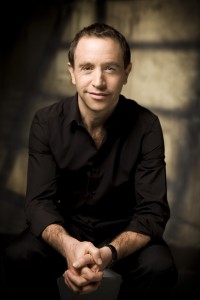UTAH SYMPHONY, Abravanel Hall, Jan. 9; second performance 8 p.m. Jan. 10, tickets at 801-355-2787, 888-451-2787 or www.utahsymphony.org
The Fifteenth is Shostakovich’s most enigmatic symphony. While one finds humor, pathos, angst and sarcasm here (as one does in the 14 preceding symphonies), there is no clearly defined theme in the Fifteenth; it’s missing a thread that unifies the work’s four movements. One can easily read a lot into the music, and there certainly is a penchant for doing so when it comes to Shostakovich’s symphonies and string quartets, but sometimes one needs to forget about finding some hidden meaning and look at a work for what it is — a piece of music. Period.
That holds true for the Fifteenth, Shostakovich’s last symphony. It’s arguably his weakest symphony, simply because it comes across as a hodge podge of ideas, many of which aren’t very good. It frequently feels as if he’s scraping the bottom of the barrel for ideas and, except for the first movement, it ends up sounding like something one has heard before — and in better formulations.
The most successful, and most interesting, movement is the opening Allegretto. It is cleverly constructed and orchestrated and could very well exist as a stand-alone piece. Shostakovich shows his dexterity as an orchestrator and his deft juxtaposition of original motives with quotes from other works, most notably here from Rossini’s William Tell overture. The movement’s layout is concise and clearly defined, and the music is vibrant and enthralling.
The Fifteenth is on the Utah Symphony’s program this weekend and is given a well considered and formulated reading by guest conductor Mark Wigglesworth, who obviously has a deep fondness for this work. He delved into the core of the music at Friday’s concert and culled a finely crafted and thoughtful interpretation.
The musicians, for their part, played it splendidly. Their articulation was crisp and precise and they responded to Wigglesworth’s direction with well expressed phrasings and delivery.
Of special note is principal cello Rainer Eudeikis’ gorgeously enunciated solo playing in the Adagio, which he imbued with poignancy and finely delineated emotion. This was without doubt the highlight of the evening.
The only other work on the program is the second act from Tchaikovsky’s The Nutcracker. It is a real joy to hear this music played by the full complement of instruments for which it was intended and not the skeleton ensemble that accompanies the ballet each December in the Capitol Theatre. The performance was sparkling, and among the many wonderful solo moments mention must be made of the exceptional playing by Tad Calcara (clarinet); Mercedes Smith, Caitlyn Valovick Moore and Melanie Lançon (flutes); James Hall (oboe); and Jason Hardink (celesta).

